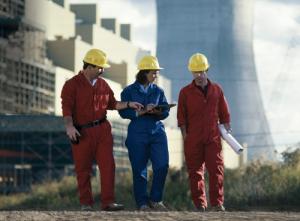What construction cost might prompt orders for new nuclear power plants in Texas?
Geoffrey Rothwell is senior lecturer in the Department of Economics and the associate director of the Public Policy Program, Stanford University. He is also working for the U.S. Department of Energy on the economics of new nuclear power. However, the analysis here is independent research.
Electricity generation deregulation has opened U.S. wholesale electricity markets to unregulated power producers. In this uncertain environment, how should a generating company evaluate the risk of investing in new capacity?1

Building upon the calculations in the sidebar (see p. 51) we can calculate the price trigger for new nuclear power capacity by considering the option of building an advanced boiling water reactor (ABWR) in Texas coming into commercial operation in 2010.2 This article: (1) provides a technique for estimating the mean and variance of net revenues from the power plant; (2) calculates the variance of net revenues; (3) determines a price trigger, or K*, that might trigger new orders for the current generation of nuclear power plants; and (4) discusses how to mitigate net revenue uncertainties in the form of controlling price risk, output risk, and cost risk.
ABWR Construction, Investment, Price, Output, and Cost
As an application of the real options approach to evaluating new nuclear power plants, public data is available to estimate construction cost, electricity prices, megawatt-hours generated, and operating costs for an ABWR in Texas. First, Table 1 (see p. 50) presents the average construction capital cost of a dual-unit ABWR built in the United States.3 The following summarizes the reactor supplier's statement regarding Table 1:

